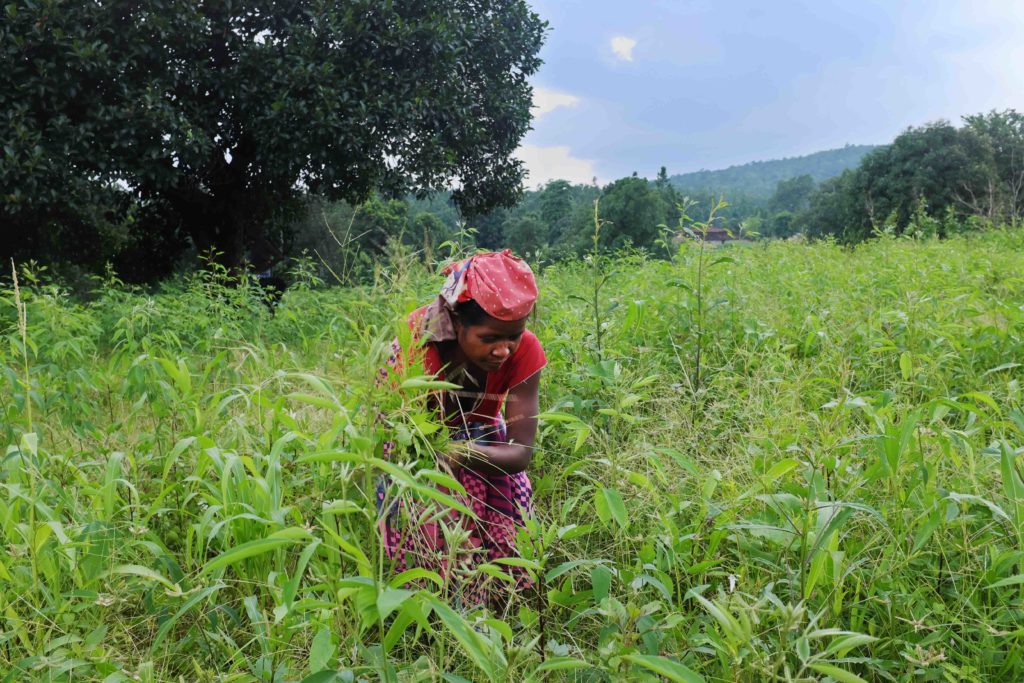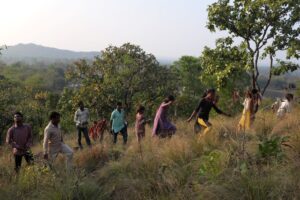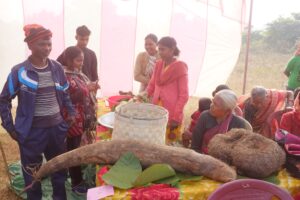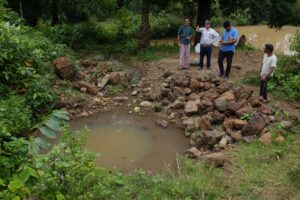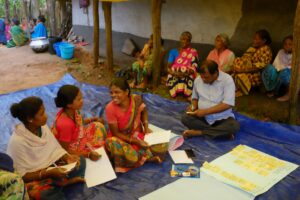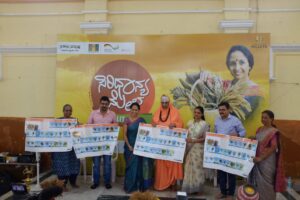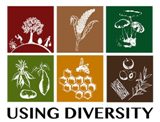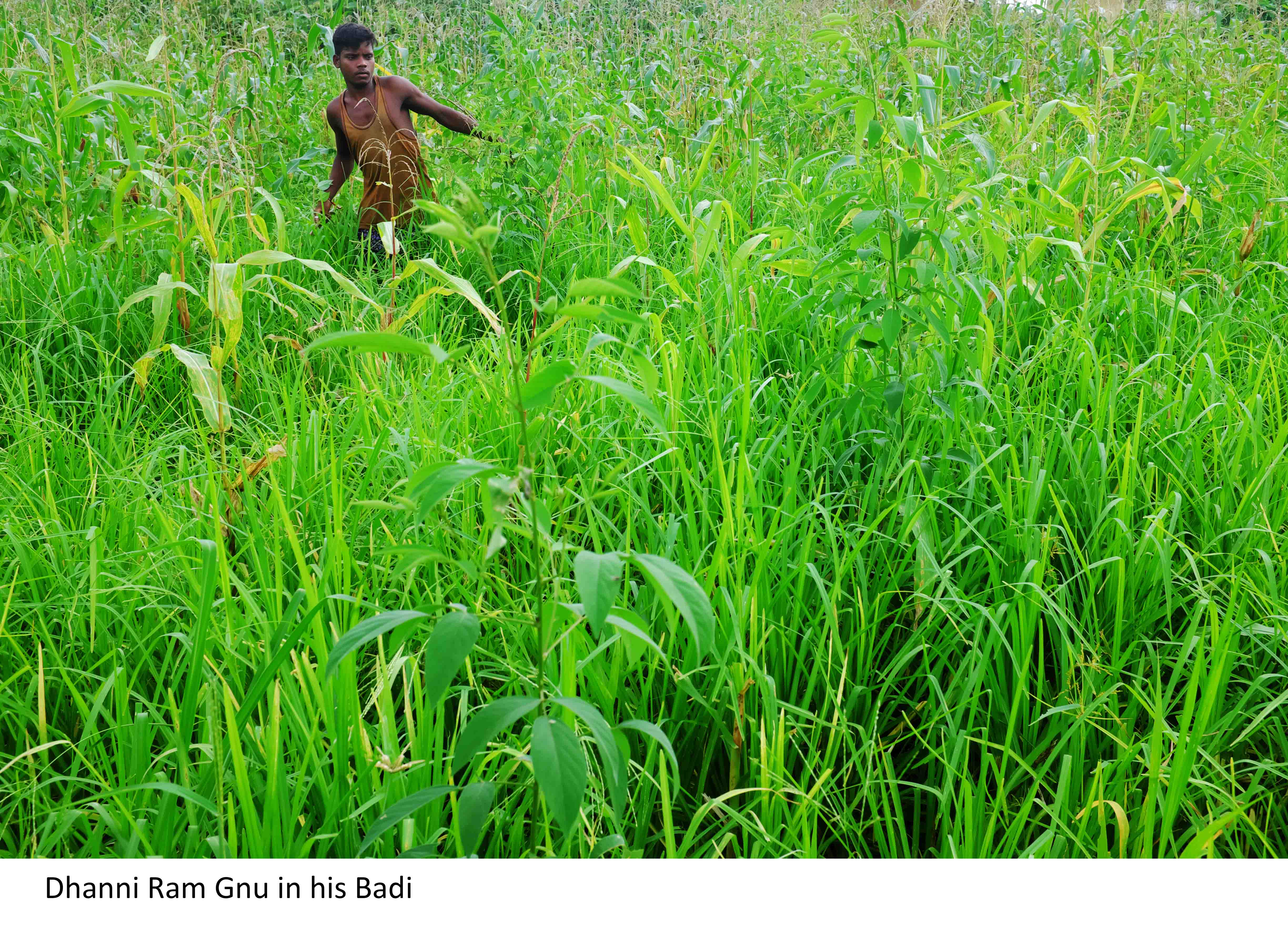
As I entered the Pahari Korwa village of Amanara in Raigarh District of Chhattisgarh, on a rainy afternoon in early September I witnessed that the monsoons had given the entire village a green make over. The plots adjoining the villagers’ habitation which had been rendered dry and barren only a few months ago by the unforgiving summer were now completely transformed and were lush and green with an abundance of vegetation.
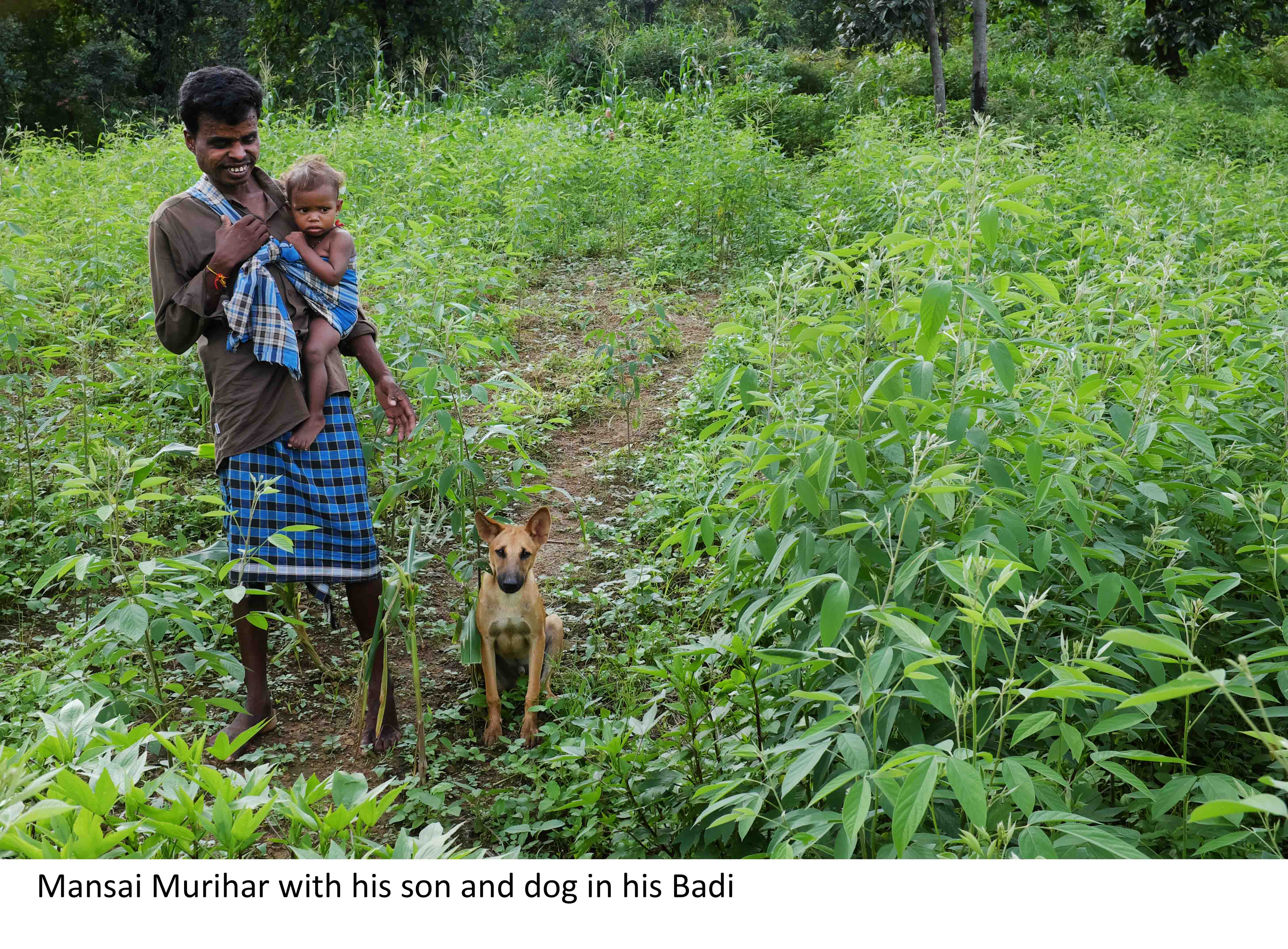
On closer inspection in the course of a village trail accompanied by UD fellow Bhawru I realised that the diverse vegetation in the villagers habitation plots locally called Badi’s were a mix of a variety of different crops cultivated by the Pahari Korwas as a part of their traditional mixed cropping Badi cultivation practice. As I explored a number of Badi’s accompanied by their respective owners I found that the rich variety of plants flourishing there varied tremendously in their size, shape and purpose. The tall and wispy makka (maize) plants tend to stand out at a distance but once closer one realises that each Badi has its own diverse mix of several different crops that make their own unique contribution to the diverse diet of the Pahari Korwas that ensures both food and nutritional security and enables them to carry out the variety of physically challenging tasks that their way of life demands.
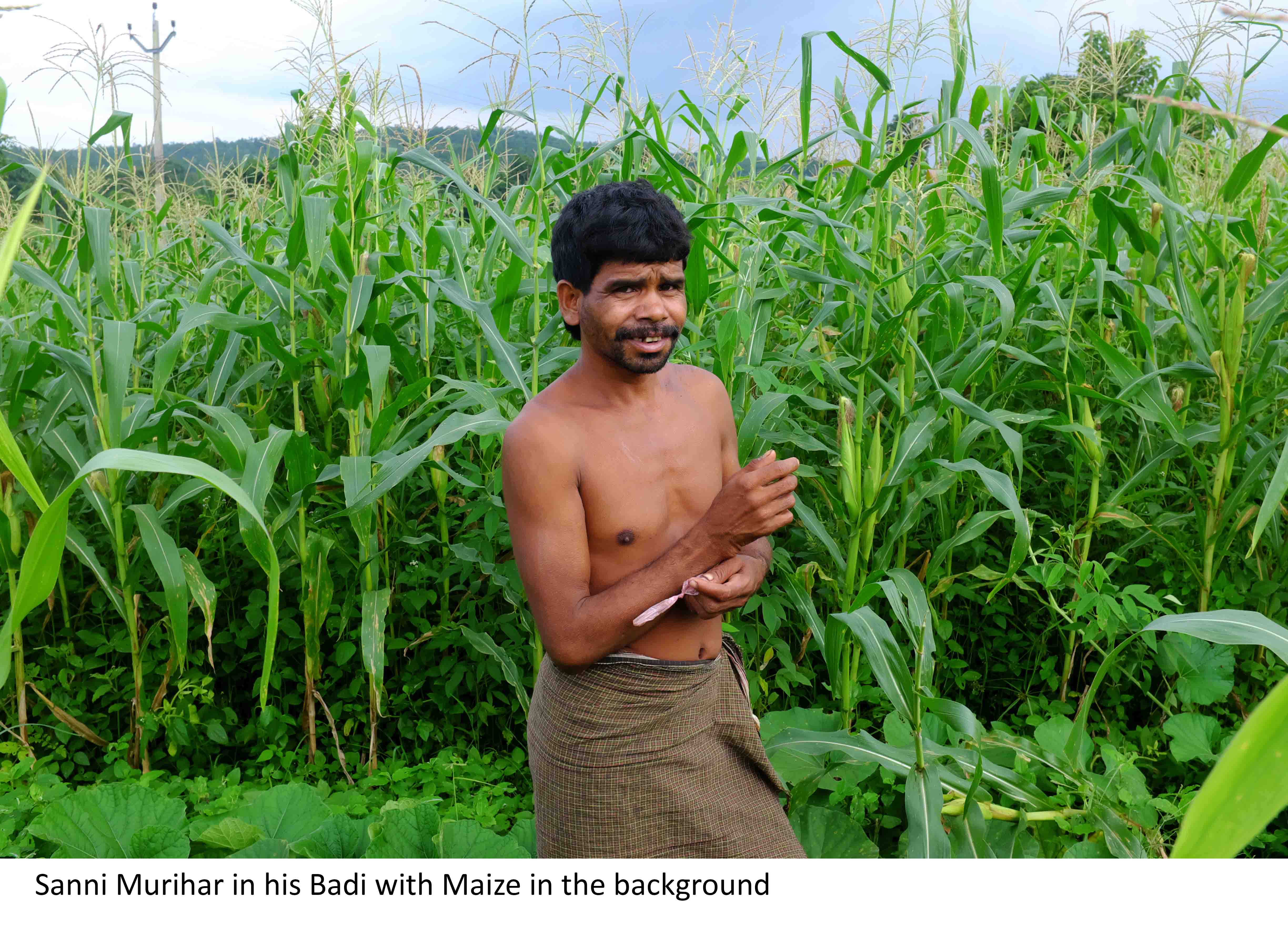
Some of the main crops I came across cultivated in the Pahari Korwas’ badis were:
- Makka (Maize) which eaten in several forms which include – roasted, rotis and a rice like preparation.
- Kang – Fox Tail Millet
- Kochai – Large heart shaped leaves. The leaves and the stem are made into a vegetable preparation and the tubers are also consumed.
- Lak Semi – It is used both as a daal/pulse and as sabji/vegetable preparation.
- Sutru – It is a lentil used for daal.
- Lal Chhench – The leaves are used both fresh and dried as a leafy vegetable.
- Chhench – The leaves are used both fresh and dried as a leafy vegetable.
- Amari – the fruits and leaves are used for vegetable preparations.
- Thadi Lakra – The leaves are consumed as a leafy vegetable and also used as medicine for livestock.
- Lakra – leaves and fruits are used as in vegetable preparations.
- Rahar – Pigeon pea lentils used as daal.
- Bajra – Pearl millet.
- Churchutia Kanda – A tuber that is roasted and also consumed as part of vegetable preparations.
- Raksi Phal – They use the fruit along with urad to make badis.
- Haldi –
- Kheera –
- Bhindi –
The badis also have fruit trees like banana and papaya in and around them.
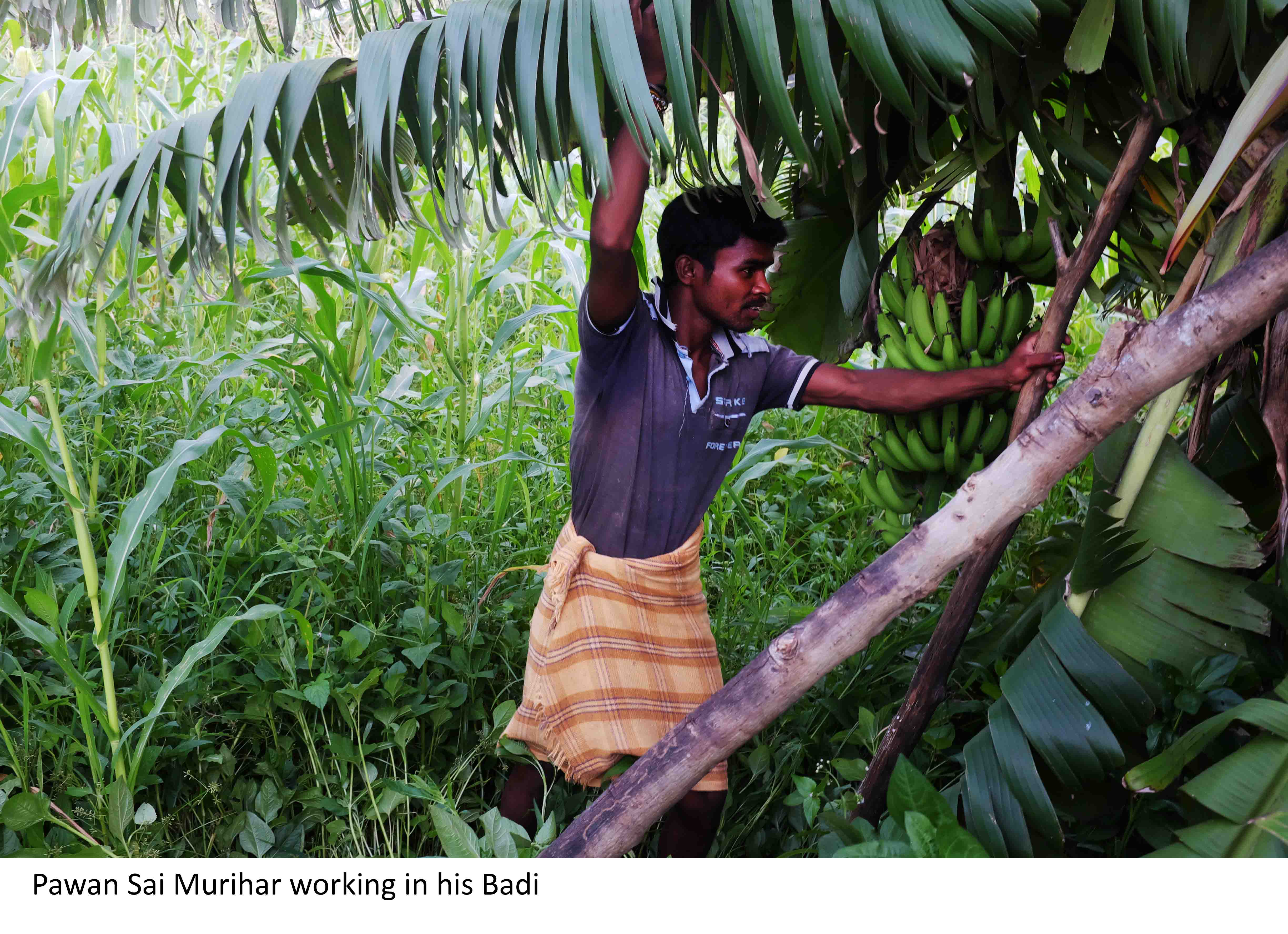
In addition a few uncultivated foods are also grown in badis:
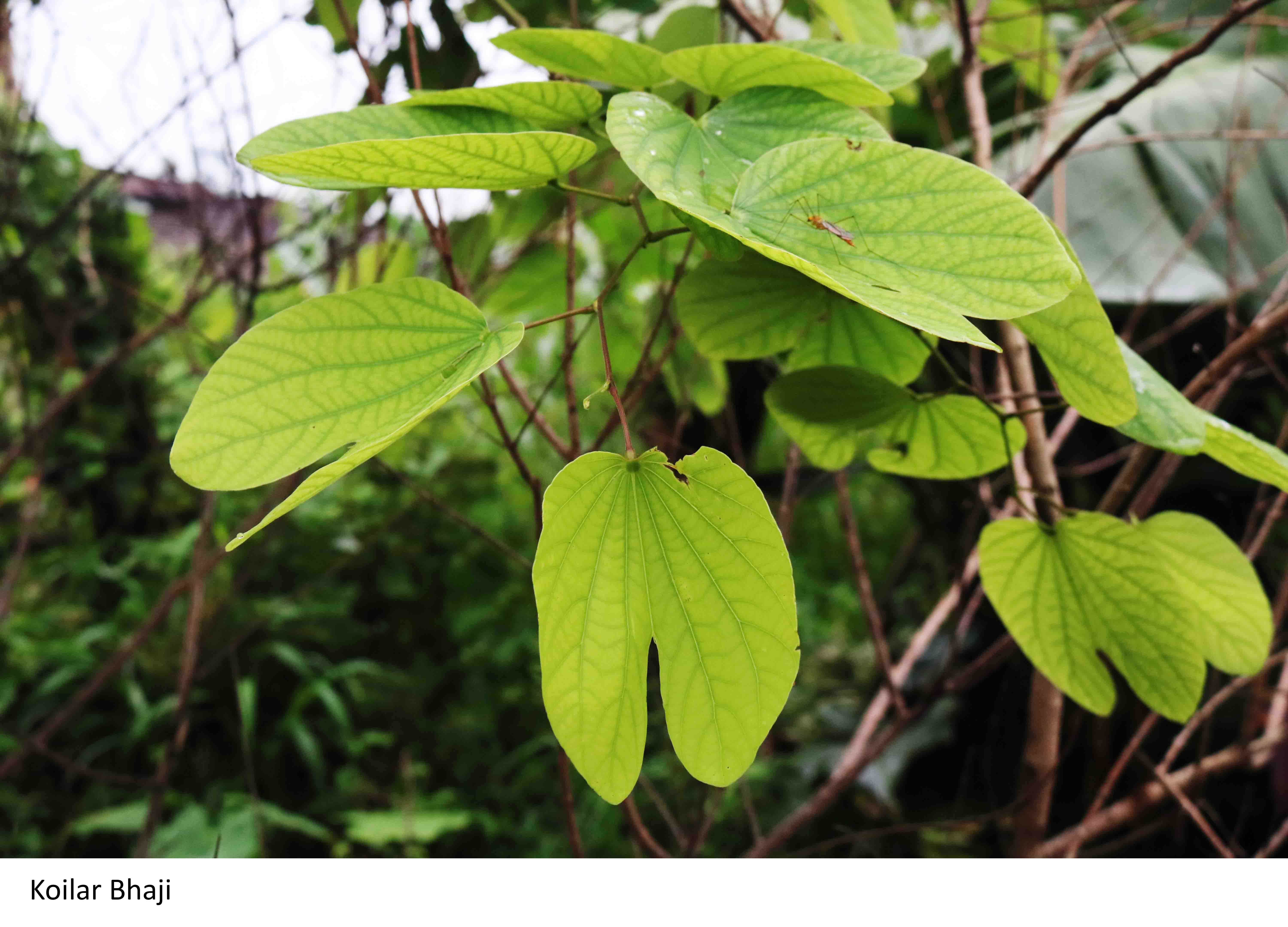
- Van Karela – the seeds are boiled 7 times and then they grind and eat them. They are very beneficial in combating kamjori (weakness) and also used to prepare medicine for chechak (chest related illness).
- Karu Bhaji – Leaves are used as a leafy vegetable and are considered good for preventing malaria.
- Koilar Bhaji – The leaves are consumed as a leafy vegetable.
- Kareli – they eat the leaves and fruit as vegetable preparations. During fever it helps clear sourness of the mouth.
Amanara as a whole was abuzz with activity, with men and women all busy weeding and looking after their badi plots. We were fortunate to arrive at a time when maize had ripened in a few badis and we enjoyed roasted bhutta as well as rotis made from corn.
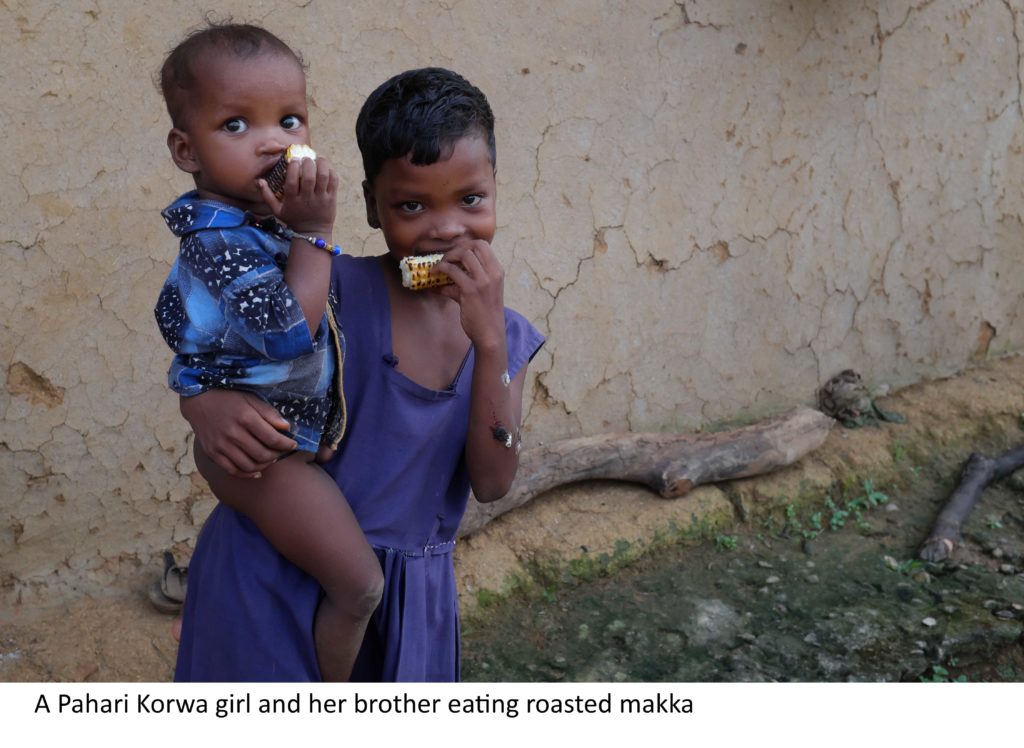
With a gradual shift to a market based economy mono crops, largely involving rice, are expanding rapidly in Pahari Korwa villages of the region and resulting in a decline in the rich tradition of mixed cropping cultivation in the Pahari Korwa’s badis. On a more positive note several organisations, institutions and individuals are working along with local communities for the protection and revival of traditional agricultural practices like Badi cultivation by spreading awareness of the benefits of mixed cropping, instilling a sense of pride among the Pahari Kowars for their rich tradition of mixed cropping, facilitating seed exchanges among the Pahari Korwas themselves as well as with other adivasi communities who still follow traditional mixed cropping practices.

